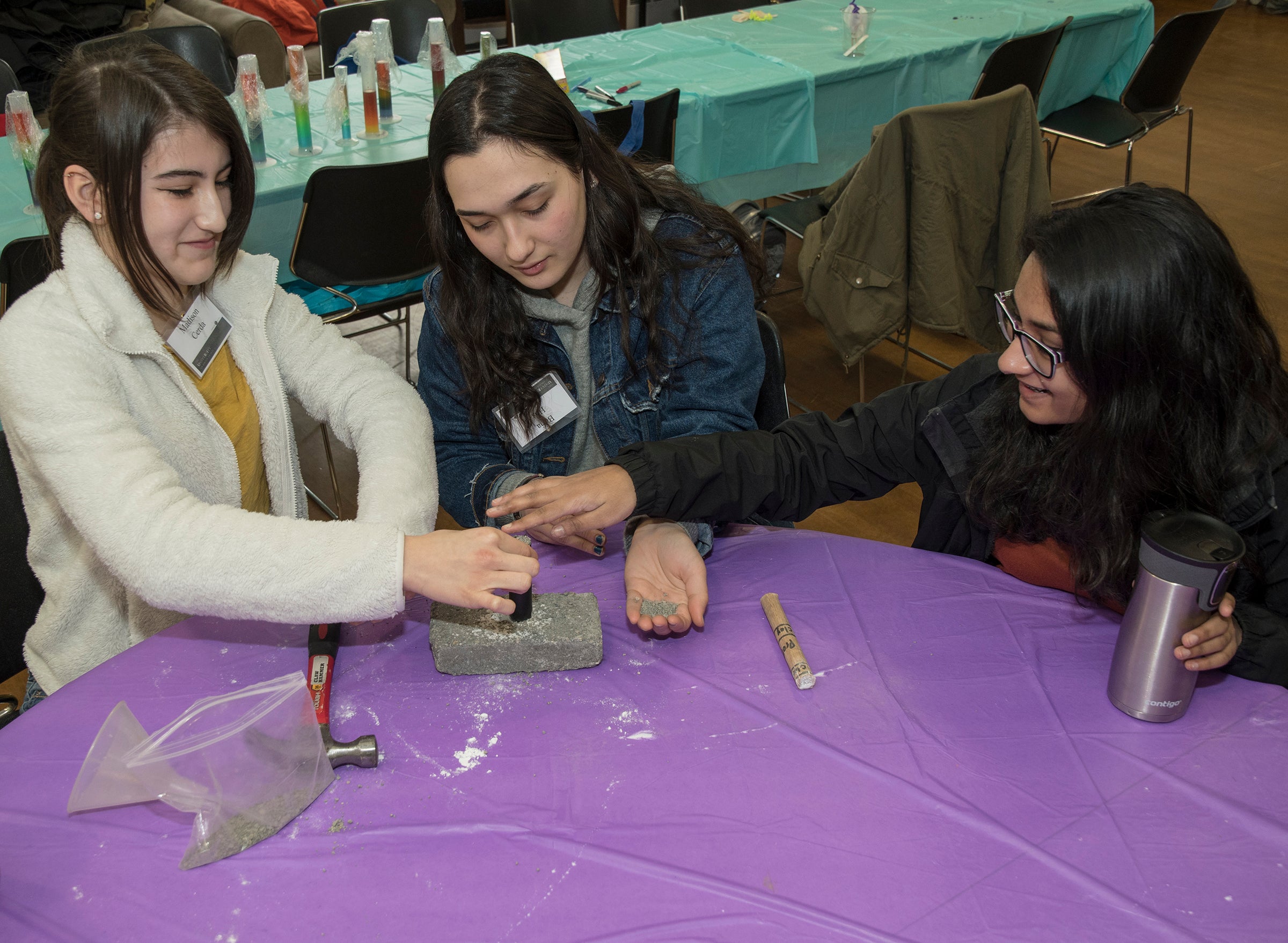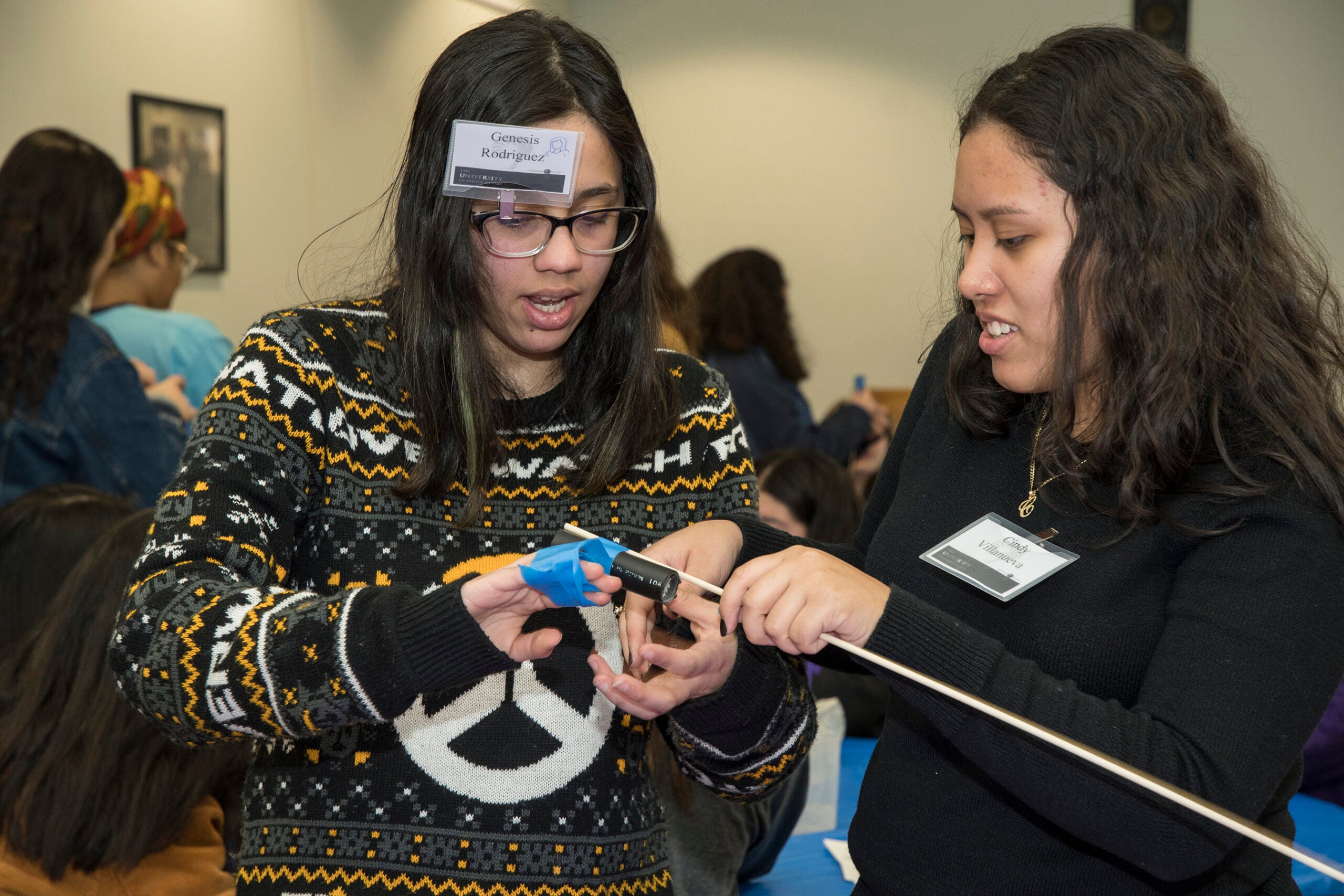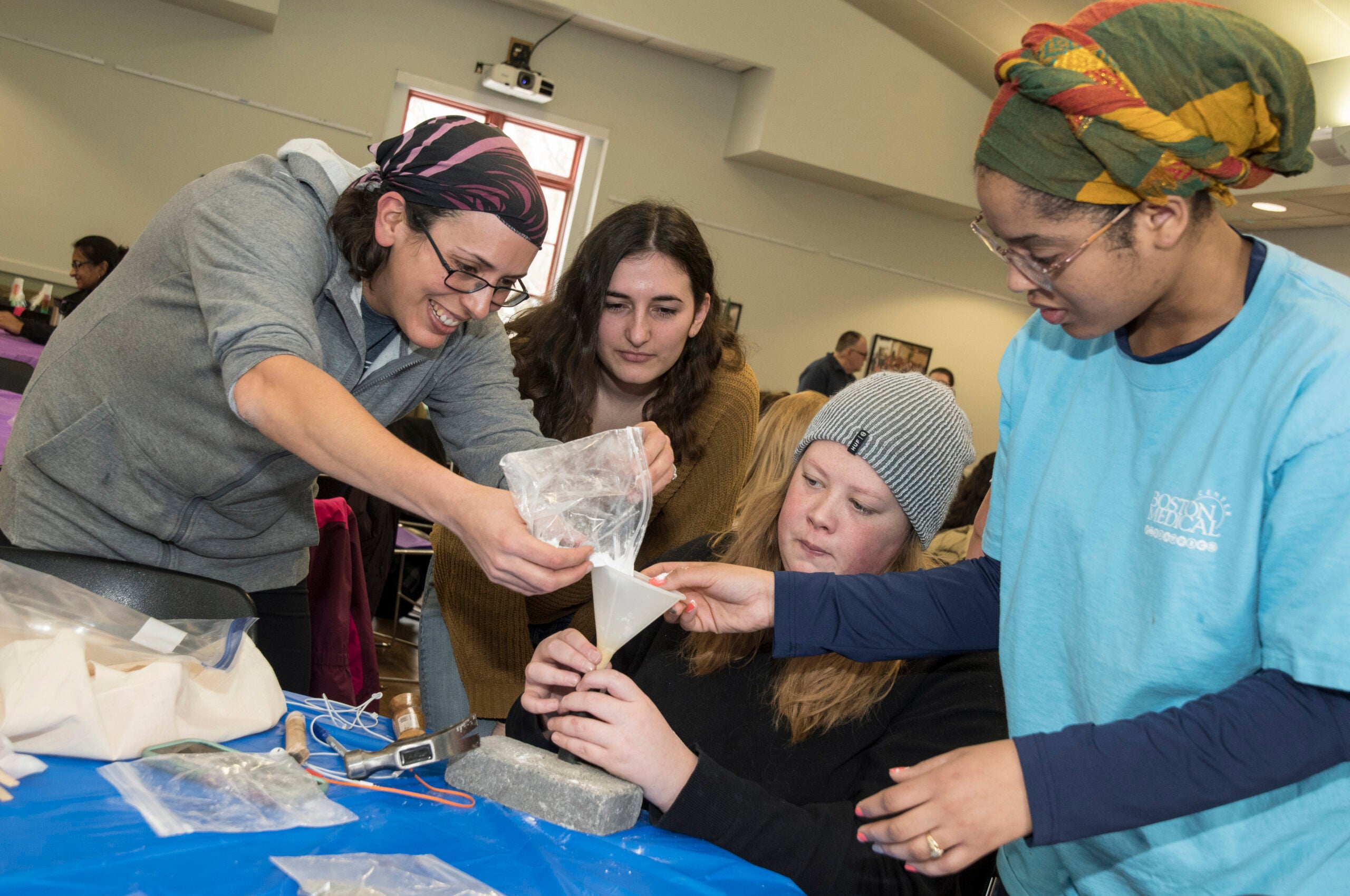KINGSTON, R.I. – Feb. 27, 2019 – In chemistry, as in life, sometimes you have to sacrifice to succeed. That time came early at the fourth annual Sugar Science Day at the University of Rhode Island on Wednesday, Feb. 20.
Fifty high school girls working at nine tables created a distinct buzz as they undertook an experiment in chromatography, the separation of mixtures. Each group sorted piles of Skittles and jelly beans into plastic cups by color, preparing to soak them in salt and water to separate out their color.
That’s when URI Chemistry Professor Mindy Levine asked them to make a sacrifice for science’s sake. “If you want to bite your Skittles in half,” offered Levine, “this is your bite-them-in-half time.”

Levine has hosted Sugar Science Day since 2016 as way of empowering girls to explore chemistry and other STEM fields. Research has shown that girls start losing interest in science around middle school, and while the majority of college graduates and master’s level graduates are women, their numbers lag in the science, technology, engineering and mathematics professions.
Working on the experiment, Madison Cerda happily complied with Levine’s advice. Biting the candies made it easier to extract the color. A freshman at Mount Saint Charles Academy, in Woonsocket, she chewed all her team’s lime Skittles before placing them each in a cup. “I like the green ones best,” she said.
Candies chewed, colors separated, Cerda and her lab partners, Beria Hos and Kavana Girish, juniors from East Greenwich High School, tried to perfect their salt-water mixture – a little more salt, a little more water. The students then used droppers to collect different colored water and decorate a coffee filter, turning it into a butterfly with a clothespin and colored pipe cleaners.

“This is not what I thought I’d be doing this morning,” said Girish, happily.
Like the experiment, Sugar Science Day is a mixture – equal parts crafts, fun and candy with a large dose of science and girl empowerment. The four dozen girls, 9th to 12th graders from high schools around Rhode Island, spent the day studying the chemistry of sugar – measuring the amount of sugar in soft drinks, making a sugar density rainbow, creating mutant super sugar bubbles (sugar plus soap and water), concocting ice cream with liquid nitrogen (and eating it), creating sugar-based fuel to launch their own bottle rockets.
“My chemistry teacher told me about this. I’m usually all for doing these types of science events,” said Girish. “I like that it’s for all girls and empowering girls to learn more about science. I also hadn’t thought about sugar science in general, and how it affects your daily life.”
Cerda, who’s interested in pursuing forensic science, enjoyed the cool factor of the experiments, and likes the many ways science can affect the world. “There are so many different types of science and so many fields to explore,” she said. “There are so many ways that science can help the environment and the community.”
In addition to Sugar Science Day, Levine has started other programs to extend science opportunities to girls. She runs a weeklong chemistry camp for middle school girls during April school vacation, and conducts outreach programs at area schools, such as The Greene School in West Greenwich and the MET School in Providence.
All support her commitment to showing girls they too can be scientists. “I’m a scientist, I’m female,” Levine said. “I can like pink or not like pink. I can wear my hair long or not … whatever it is. But if I have the mind and the interest and the motivation for science, this is what we can do.”
While in school, Levine witnessed the number of female colleagues in the sciences dwindle as she progressed. “When I started in college as an undergraduate, it was about 40 percent female,” said Levine. “As a graduate student, we were down to about 30 percent. As a post-doctorate student, it was down to about 15 percent, and as a faculty in chemistry, that number is even lower.”
The excitement for Sugar Science Day went beyond the high school students. Along with Levine’s seven graduate students, two female grad students who work with Chemistry Professor Brenton DeBoef volunteered to help, along with a student from Bridgewater State University who had heard about the event and a student from The Prout School in Wakefield.
Isabella Abilheira, a senior at Prout, took part in Sugar Science Day last year and was one of two high school students chosen to do summer research in Levine’s lab. She asked to come back this year. “It’s a great way to introduce girls to science and it’s such a fun day, too,” says Abilheira, who plans to study engineering in college. “It’s almost like you’re not doing work and you’re having fun, and doing actual science.”
Fun and science collided as DeBoef, a rocket enthusiast, led an experiment that used a different property of sugar – its ability to burn.
At one table, MET School students Genesis Rodriguez, Cindy Villanueva and Clarissa Lombardi worked at making a rocket from a plastic tube, kitty litter, sugar and potassium nitrate, a wooden dowel and tape. The girls took turns using a hammer to first compress kitty litter into the tube and then the fuel source – sugar and potassium nitrate.
Villanueva, a sophomore, participated in sugar science last year and was back for more. “I just like messing around with science,” she said. “I want to do something with forensics. I want to do something involved with the law, and because forensics is a combination of law and science, I thought that’s a perfect match for me.”
“I want to become a chemical engineer,” said Rodriguez, a junior. “I feel like I need more science opportunities and whenever there is one, I jump right on it. That’s why I wanted to come – plus it’s sugar.”
Down on a frozen soccer field, the 50 high school girls got a chance to see if their rockets would fly true. The girls stood in a disorderly semicircle, some with cell phones at the ready. As the first rocket took off with a hiss and a swoosh, mouths fell open.
“Where did it go?” one girl asked as the rocket zooming into the sky, eventually disappearing from view.
The experiment was a success.

